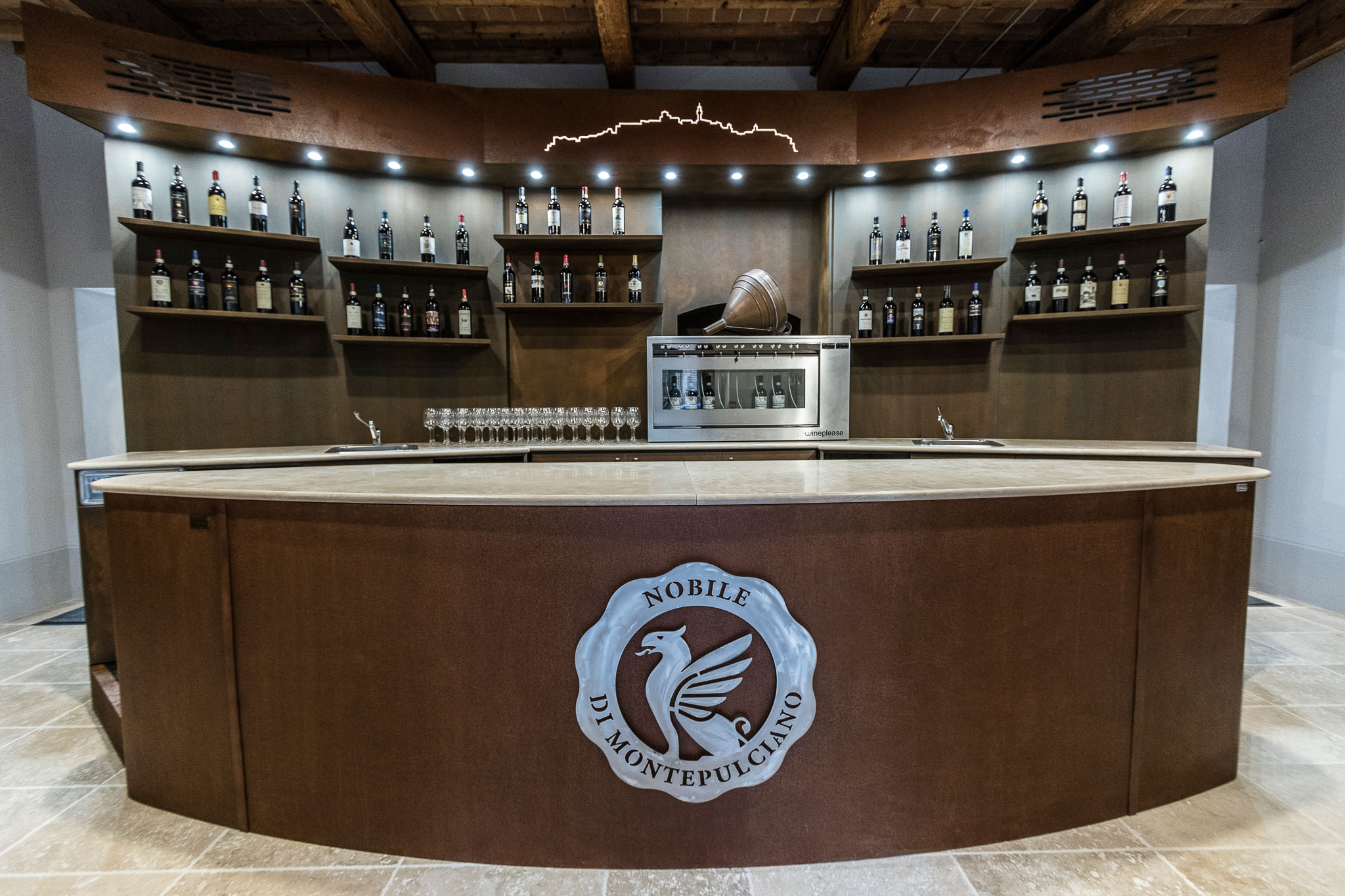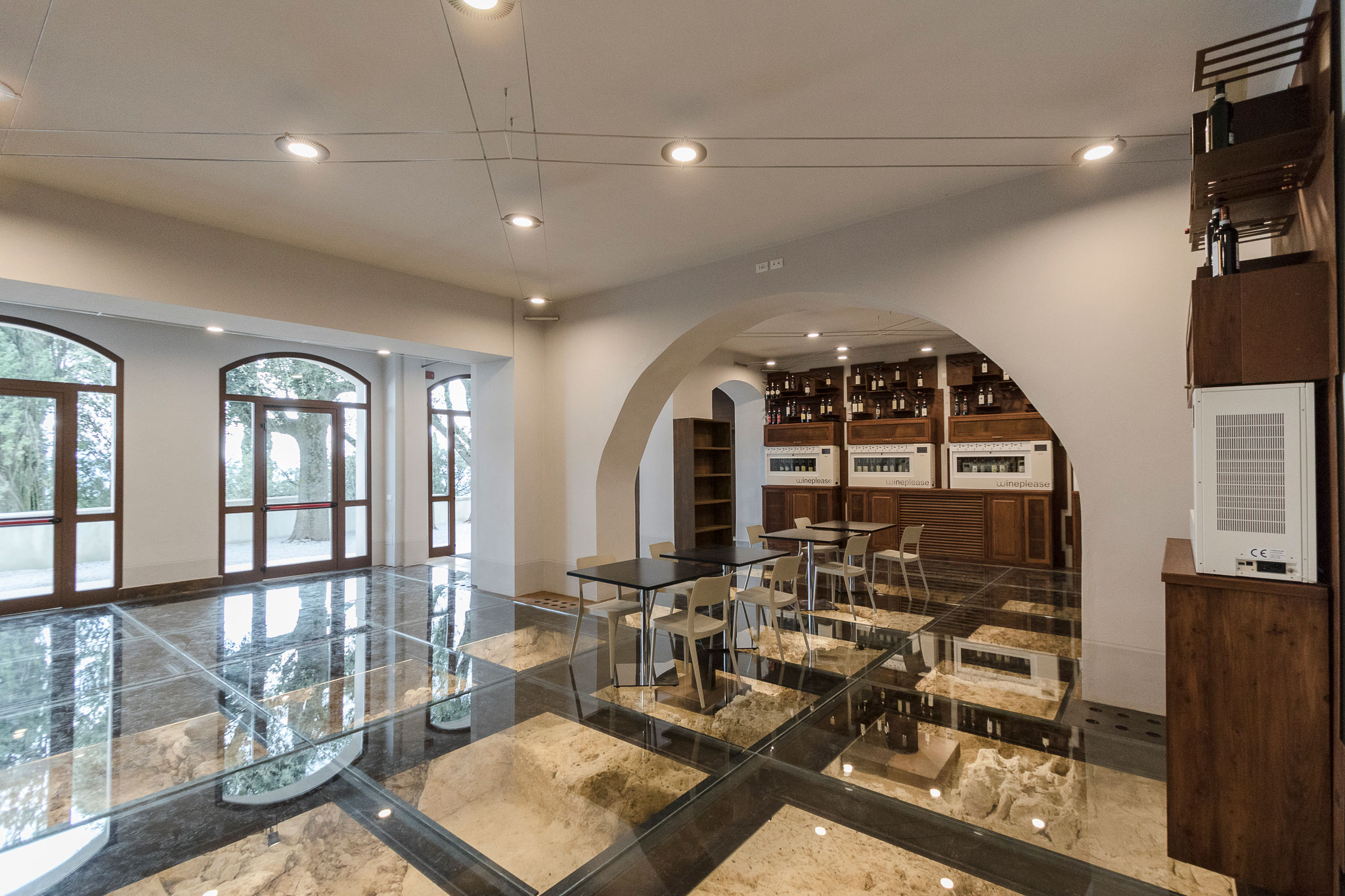
About Us
The Montepulciano Fortress, which also houses the Consortium offices, is fruit of an impressive restoration project which has involved the Municipality, Nobile wine producers and an overseas partner, the Kennesaw University of Georgia (USA). Thanks to the funds raised, this building has been completely restored and reopened to the public. Indeed, it is also used as location for art exhibitions, performing arts, meetings, courses and other cultural activities.
The new ENOLITECA run by the Consortium looks out onto the cloisters of the Ancient Fortress of Montepulciano and affords access to a magnificent garden within, enhanced by a panoramic view of the Temple of San Biagio and of the Val di Chiana and Val d'Orcia. What better place, therefore, in which to discover and taste the wines of the producers belonging to the Consortium of Vino Nobile (about 100 labels are available every day) together with a selection of local food specialities, under the guidance of an expert who is always on hand. For those wishing to familiarize with the various products available there are two tasting formulae - a taste or glass - to which visitors may help themselves thanks to the innovative Wine Dispensers designed for use with rechargeable cards. Steeped in history, art and breathtaking landscapes, this is the best possible way to become acquainted with Vino Nobile di Montepulciano.
The most characteristic feature of the Enoliteca is the glass floor enabling visitors to admire the archaeological findings in the basement. In fact, this transparent surface reveals some tanks and cavities discovered during work on the rooms behind the main courtyard of the Fortress which were first cleared of the debris and various materials used to level the subfloor of the 19th century paving, when the medieval ceramic tiles were being recovered. When the excavation work was almost over, a circular dry wall structure of considerable dimensions was identified (with an internal diameter of about 5.50 metres, amounting to 7-8 metres in all, comprising the masonry and the external waterproof layer in clay) which contained artifacts dating back to the Etruscan and Roman ages. Despite having inspected the deposit for no more than a few dozen centimeters, it revealed fragments of antefixes, painted tiles, loom weights, calcareous stone and painted plaster attributable to prestigious and stately buildings of the past. These findings confirmed the most ancient origin of the Montepulciano acropolis, which had already come to light in the 90’s with the recovery of Etruscan materials at the foot of the Fortress, further endorsing the existing evidence of a human settlement or sanctuary having stood at the top of the Montepulciano hill in antiquity.

